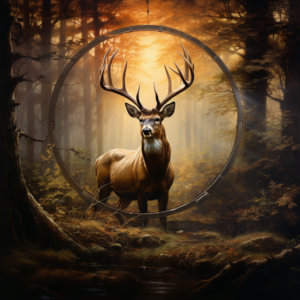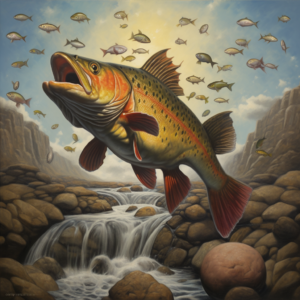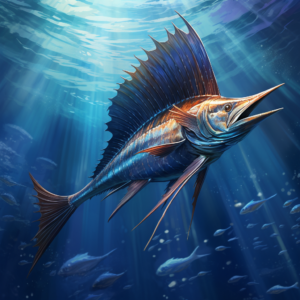Discovering the Natural Wonders of the United States
The United States is a treasure trove of natural beauty, boasting diverse landscapes that range from snow-capped mountains to expansive deserts and lush forests.
From the breathtaking Grand Canyon to the majestic Rocky Mountains, the natural wonders of this country are truly awe-inspiring. It’s no wonder that nature enthusiasts from all over the world flock to the US to immerse themselves in these stunning landscapes.
But it’s not just the stunning visuals that make the natural beauty of the US so special. The biodiversity of these landscapes is equally impressive, with a rich variety of wildlife that includes bears, eagles, wolves, and so much more.
“The clearest way into the Universe is through a forest wilderness.” – John Muir
But, with this incredible natural beauty comes a great responsibility to protect and preserve it. Conservation efforts are crucial in ensuring that these landscapes and the diverse wildlife that call them home continue to thrive.
Through sustainable practices and conscious efforts towards conservation, we can ensure that future generations will have the same opportunity to experience the natural wonders that we have been blessed with.
The Natural Beauty of the US
The natural beauty of the US is unparalleled, with stunning landscapes that vary greatly from region to region.
One of the most iconic natural wonders is the Grand Canyon, a massive gorge that stretches 277 miles across northern Arizona. With its colorful rock formations and deep crevices, the Grand Canyon is a sight to behold and attracts millions of visitors each year.
The Rocky Mountains are another beloved natural wonder, known for their snow-capped peaks and stunning alpine vistas. With a range that spans across several states, these mountains offer endless opportunities for hiking, camping, and other outdoor activities.
The Importance of Biodiversity and Conservation
The biodiversity of the US is equally impressive, with a rich variety of wildlife that ranges from grizzly bears and gray wolves to bald eagles and peregrine falcons.
However, many of these species are threatened by habitat loss and other factors that endanger their survival. This is why conservation efforts are so important.
By supporting organizations dedicated to preserving these natural habitats and engaging in sustainable living practices ourselves, we can ensure the survival and thriving of these magnificent creatures.
So, whether you’re hiking through the Rocky Mountains or watching bald eagles soar through the skies, take a moment to appreciate the natural beauty of the US and do your part to protect it for generations to come.
Engaging in Outdoor Activities
The great outdoors is calling, and it’s time to answer! There’s nothing quite like the thrill of engaging in outdoor activities while surrounded by nature’s beauty. Whether you’re a seasoned adventurer or just starting out, there are countless ways to enjoy outdoor activities that are both fun and eco-friendly.
One of the best ways to immerse yourself in nature is through hiking. With trails ranging from easy to strenuous, hiking is a great way to get exercise while exploring the outdoors. Don’t forget to pack water and snacks, and make sure to leave no trace by properly disposing of any waste.
Camping is another popular outdoor activity that allows you to disconnect from the hustle and bustle of everyday life. Choose a campsite that is seasonally appropriate and be sure to follow Leave No Trace principles by respecting wildlife and avoiding damaging the environment.
If you prefer water-based activities, kayaking and canoeing are excellent options. These activities allow you to observe wildlife up close while enjoying the serenity of the water. Remember to practice responsible boating by wearing a life jacket and avoiding disturbing any wildlife habitats.
Birdwatching is a peaceful and rewarding way to experience nature. With over 900 bird species in the United States, there’s always something new to discover. Bring a pair of binoculars and a field guide to help with identification, and make sure to stay quiet and respectful to avoid disturbing the birds.
No matter what outdoor activity you choose, it’s important to do so sustainably. Consider carpooling to reduce carbon emissions, use biodegradable and eco-friendly products, and follow Leave No Trace principles to minimize your impact on the environment. By engaging in outdoor activities mindfully, you can enjoy the beauty of nature while contributing to its preservation for generations to come.
Encountering Wildlife in their Natural Habitat
One of the most thrilling experiences nature has to offer is encountering wildlife in their natural habitat. Observing these incredible creatures in the wild can be an unforgettable experience, but it’s important to do so responsibly to ensure their wellbeing and preservation.
First and foremost, keep a safe and respectful distance from the animals. Getting too close can be dangerous for both you and the wildlife. It’s also essential not to disturb them, as this can disrupt their natural behavior and potentially harm their survival.
When observing wildlife, it’s important to be patient and let them approach you if they choose to. Using binoculars or a camera with a telephoto lens can help you get a good view without getting too close. If you’re lucky enough to see cubs, nests, or dens, keep your distance and avoid lingering in the area.
While observing wildlife is undoubtedly exciting, it’s also crucial to remember the importance of conservation. Many species are endangered, and their protection and preservation are vital. By supporting conservation efforts and spreading awareness, we can all play a part in ensuring the survival of these incredible creatures and the preservation of their habitats.
“In the end, we will conserve only what we love, we will love only what we understand, and we will understand only what we are taught” – Baba Dioum
When encountering wildlife, it’s also important to practice eco-friendly behavior. Avoid littering or leaving any trace, including footprints, and respect the environment by not disturbing the natural landscape. By being considerate of the wildlife and their surroundings, we can enjoy our experience while advocating for the protection and preservation of nature.
Overall, encountering wildlife in their natural habitat is an exhilarating experience that should be approached with caution and respect. By doing so, we can appreciate these incredible creatures while advocating for their survival and the conservation of their habitats.
Capturing the Beauty through Nature Photography
Do you ever find yourself in awe of the natural beauty around you, wishing you could capture it and preserve that moment forever? Nature photography allows us to do just that, and it’s a wonderful way to connect with the world around us. Whether you’re a seasoned photographer or just starting out, capturing the beauty of nature through your lens can be a rewarding and fulfilling experience.
One of the keys to successful nature photography is understanding the importance of composition and lighting. When photographing landscapes, consider the rule of thirds and try to incorporate elements of interest in the foreground, middle ground, and background. Pay attention to the quality and direction of light, as it can greatly affect the mood and impact of your photographs.
When photographing wildlife, it’s essential to approach the animals with respect and caution. Be mindful of their natural habitat and do not disturb them or their surroundings. Consider using a telephoto lens to capture close-up images while maintaining a safe distance from the animals.
“The best wildlife photography captures a moment in time that represents a piece of the animal’s natural behavior or habitat, and tells a story about that animal’s struggle for survival,” says nature photographer, John Shaw.
In addition to composition and lighting, it’s important to consider the technical aspects of photography such as shutter speed, aperture, and ISO. Experiment with different settings to achieve the desired effect and mood in your photographs.
As nature photographers, we also have a responsibility to promote environmental protection and conservation. By sharing our images, we can raise awareness about the beauty and diversity of the natural world and inspire others to take action in preserving it for future generations.
So grab your camera and head out into the great outdoors! With patience, creativity, and a respect for nature, you can capture the stunning beauty of landscapes and wildlife through your photographs, and contribute to the protection and conservation of our natural world.
Promoting Environmental Protection and Conservation
As nature enthusiasts, we have a responsibility to protect and conserve the environment for future generations. By taking small but impactful steps towards sustainable living, we can contribute to the larger efforts of environmental protection and conservation.
One way to promote conservation is by reducing our carbon footprint. This can be achieved through simple changes like using reusable bags and water bottles, driving less, and eating a plant-based diet. Additionally, supporting organizations dedicated to environmental protection and conservation is an effective way to make a positive impact. Consider donating to organizations that work towards preserving biodiversity, protecting wildlife, and promoting sustainable living.
Another way to promote conservation efforts is by raising awareness. Share your experiences in nature with others and encourage them to engage in outdoor activities and practice sustainable living. Volunteering for conservation projects and participating in environmental activism can also help raise awareness and make a difference.
Remember, every action counts towards protecting and preserving the beauty and richness of nature. By promoting conservation and sustainable living practices, we can ensure a thriving and healthy environment for generations to come.
Conclusion
Congratulations! You have completed the Nature Enthusiast’s Guide to Exploring the Great Outdoors and are ready to embark on your own extraordinary adventure. Remember, by engaging in outdoor activities, practicing sustainable living, and advocating for conservation, we can all play a part in preserving the beauty and richness of our natural world for generations to come.
Whether you choose to hike in the Rockies, camp in the forests, or kayak in the coasts, make sure to do so responsibly and with respect for the environment. Consider reducing your carbon footprint and supporting organizations dedicated to preserving biodiversity.
Take Action for a Better Future
By making small changes in our daily lives, we can all make a difference in protecting our planet. Try carpooling, using reusable containers, and reducing waste to help promote sustainable living.
Remember, nature is a precious gift that should be appreciated and protected. So what are you waiting for? Get out there and embrace the call of nature!
FAQ
Q: What outdoor activities can I engage in?
A: There are numerous outdoor activities you can enjoy, such as hiking, camping, kayaking, birdwatching, and more. The options are endless!
Q: How can I practice sustainable living while engaging in outdoor activities?
A: You can practice sustainable living by leaving no trace, packing out your trash, using eco-friendly camping gear, and respecting wildlife and their habitats.
Q: How can I observe wildlife responsibly?
A: When observing wildlife, it’s important to maintain a safe distance, avoid feeding them, and never disturb their natural behaviors. Respecting their space is crucial for their wellbeing.
Q: How can I improve my nature photography skills?
A: To improve your nature photography skills, focus on composition, lighting, and capturing the essence of the natural world. Practice patience and keep experimenting!
Q: How can I contribute to environmental protection and conservation?
A: There are various ways to contribute, including reducing your carbon footprint, supporting conservation organizations, planting trees, and advocating for sustainable practices.




